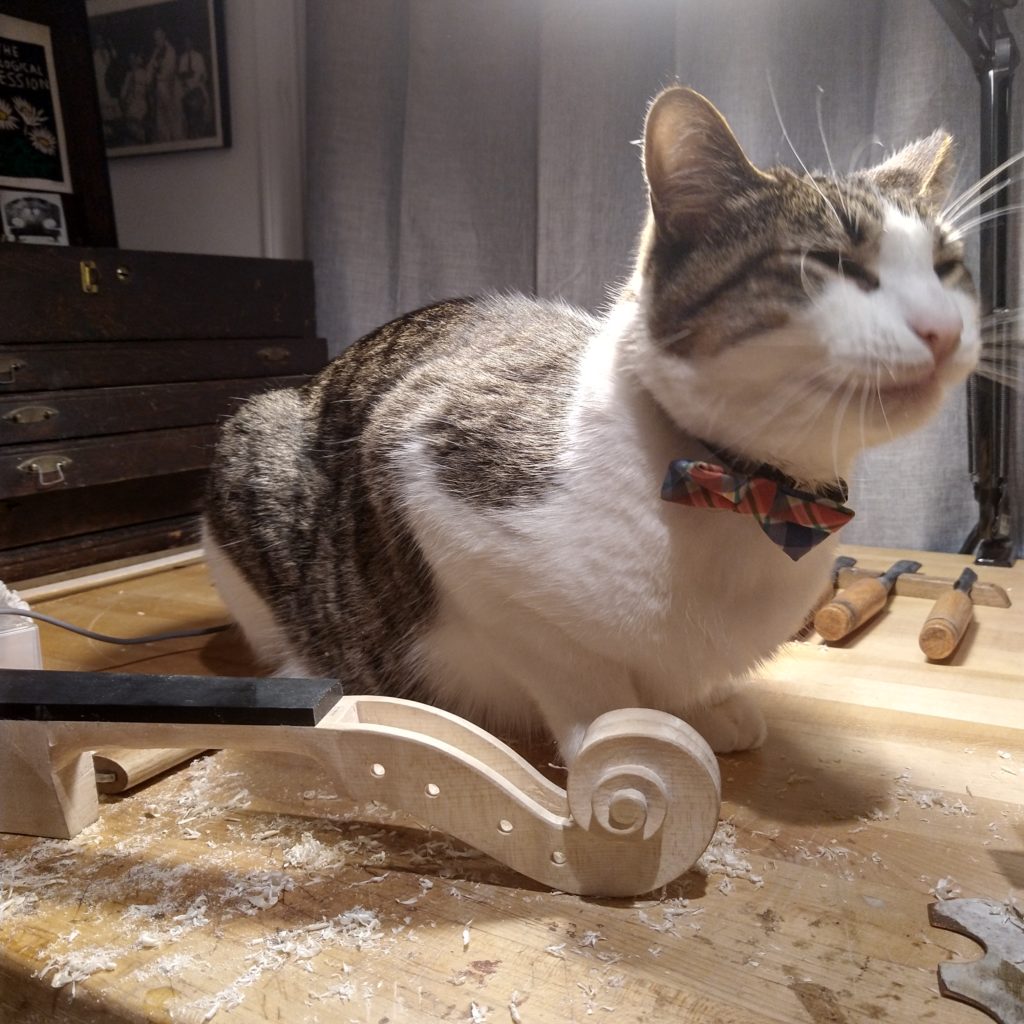I have arrived at the most critical step of building an instrument: shaping the neck. People often think that most of the work goes into getting the right sound, and this is true to an extent. But remember that for most of the construction all I have on my bench is wood, not something that can actually be played. The sound is there, in the design, in the materials, and in the embodied knowledge of craft as expressed in the making itself. But, even when it’s all done, what actually plays, what actually makes the sound and the music, is the system as a whole: the instrument + the bow + the score + the player + maybe other musicians + the room + the audience, and well, you get the idea. Which is why the neck, as a key interface and coupling between components in that system (the musician’s hand and the instrument), is so very very critical.
The neck is a complex set of curves that must satisfy multiple interdependent constraints in three dimensions. To be able to carve it I have to be able to think it first. There are three different ways, or modes of thought, I could use to do that: Techno-Industrial, Artistic, or Craft.

By the Techno-Industrial Mode I mean something that gives a complete and precise description of the final shape. This could be an elegant mathematical description of the curves, a fancy computer model, or even a physical template. This is how we think of, and build, most things in our industrial mechanized world. It’s the logic of the CNC machine, and also of the factory and assembly line more broadly.
By the Artistic Mode I mean the romantic image of an artist working from their innate genius and creativity. Instead of matching or following an existing model outside of oneself, you go about carving according to an “inner” ideal. It’s often set up as the dialectical antithesis of the mechanical reproduction of the Techno-Industrial mode, and imbued with values such as authenticity. A lot of folks think this is how violins are made, but actually…
It’s all about the Craft Mode, which often goes unrecognized because we’re not used to seeing it much anymore. At first glance it looks a bit like a mix of the other two. Some amount of templates or prescriptive measurements can be used as the basis for the construction but, these don’t set a complete and precise specification as with the Techno-Industrial Mode. The design is adjusted and filled in by the maker. But this isn’t a creative act of self-expression as with the Artistic Mode, but one of craft. That is, it’s an expression—in the act of making itself—of the embodied knowledge of the maker coming together with the physical piece being worked on.

Now going back to the neck: There are one or two points I measure relative to other points, some straights I check, and some curves I check against templates, these last of which I may not end up following exactly. The rest I have to fill in, guided by my knowledge of past instruments, players’ feedback and preferences, my tools and how they cut the wood, my eye, and by how my hand feels the neck. As I said earlier, the neck is a critical coupling in the playing-system-as-a-whole so at the end of the day that’s what ultimately matters. But I can only get there by combining the different kinds of knowing and seeing that go into working by Craft.
